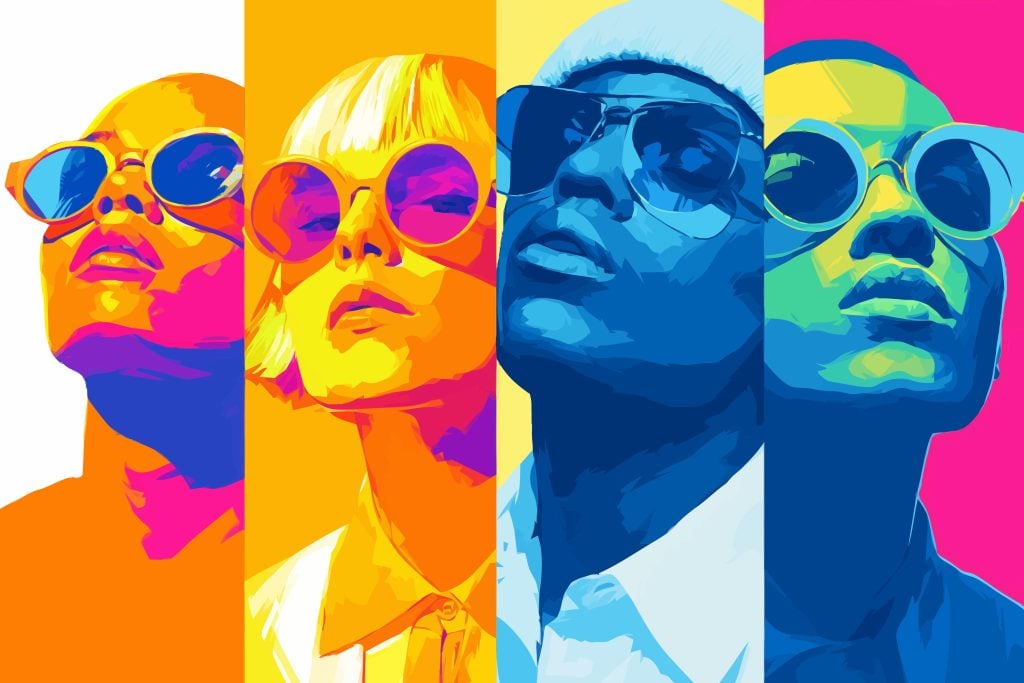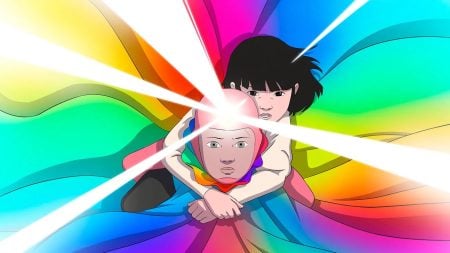Take a look at the biggest movies, trending series, or the latest viral challenge—risk is everywhere in pop culture.
We’re drawn to stories and spectacles that push boundaries, whether it’s a daredevil heist on the big screen or a TikTok challenge that sweeps across continents overnight.
This fascination isn’t just about adrenaline. It shapes what we watch, the trends we follow, and even the choices we make in our everyday lives.
So what makes risk so magnetic? This article unpacks the psychology behind our appetite for danger and explores how our obsession with risk continues to influence entertainment, social media, and beyond.
Risk and reward: the allure in entertainment and beyond
Why do stories of danger and daring moves capture our attention so completely?
Pop culture is built on this question. Whether it’s a high-octane casino heist, an action film where the hero bets everything, or a reality show contestant risking public embarrassment for a shot at glory, risk is the heartbeat of modern entertainment.
The thrill comes from not knowing what will happen next. Uncertainty and high stakes pull us to the edge of our seats. When the odds are stacked against a character—or even a real person—we feel their adrenaline by proxy. That moment when someone goes all-in resonates with anyone who’s ever taken a chance.
This attraction isn’t limited to movies or TV. It spills into trends like viral challenges and competitive gaming, where each move could mean victory or failure in front of millions. The promise of big rewards keeps us coming back, even when we know most attempts end in defeat.
Online betting taps into this same appetite for risk and reward. Platforms like ZakladyGuru make these thrills accessible from anywhere, letting people experience the pulse-pounding highs of chance without ever leaving home.
No matter the setting, risk makes every outcome matter more—and that’s why we can’t look away.
The psychology of risk-taking—why we crave the thrill
Risk grabs our attention in a way that routine never will. There’s a reason audiences lean forward when characters face impossible odds or people attempt real-life stunts—our brains are wired to respond to the unknown.
From my experience watching people at sporting events or even scrolling through social media, it’s clear that adrenaline, dopamine, and our desire for recognition all play a part. These chemicals and motives make us seek out risks, whether we’re living them ourselves or watching from the sidelines.
It’s not just about danger. It’s about how risk can make us feel alive, connected, and validated by others who see—or envy—our boldness.
Dopamine rush: the brain’s reward system
Anticipation is often just as powerful as the outcome. When we’re about to take a risk—jumping off a diving board, betting on an unlikely winner, or even sharing a controversial opinion online—our brains flood with dopamine.
This chemical creates a buzz that feels deeply rewarding. The more unpredictable the outcome, the bigger the spike. That’s why people can become hooked on risky behavior; it isn’t only the win but the suspense and possibility that fires up our reward circuits.
In recent neuroscience research, scientists found that even imagining a risky situation is enough to trigger these pathways. That’s part of what makes thrillers and high-stakes content so compelling—we experience the rush vicariously.
Social status and the spectacle of risk
Taking risks in public isn’t just about personal excitement—it’s also about being seen. Throughout history, daring acts have marked someone as brave, skilled, or different from the crowd.
Think of extreme athletes drawing crowds or influencers going viral with bold challenges. Their actions aren’t just dangerous; they’re status symbols that signal courage (or sometimes recklessness) to their audience.
This pursuit of admiration and social capital is amplified online. Every like or share is another badge of honor. In many ways, performing risky acts has become its own form of currency in pop culture—a way to stand out in an endlessly noisy world.
Risk in pop culture: from movies to memes
Risk-taking has always been a crowd-pleaser, but its expression in pop culture has shifted with each new era.
Classic action films and TV shows made the lone hero’s leap of faith feel larger than life, while today’s digital age delivers risk straight into our pockets through viral stunts and meme challenges.
The appetite for danger seems universal—whether we’re on the edge of our seats at the movies or scrolling through clips of daredevils online.
This enduring fascination isn’t just about adrenaline. It reflects something deeper: a cultural respect for courage, curiosity, and sometimes, rebellion against safe routines.
Blockbusters and adrenaline: why we love high-stakes stories
Think of franchises like Mission Impossible, Fast & Furious, or James Bond. The heroes pull off impossible heists and survive outrageous odds with a wink and a smirk.
We know it’s fiction, but there’s real excitement in watching someone risk it all—whether it’s Tom Cruise dangling from a skyscraper or Katniss Everdeen volunteering as tribute in The Hunger Games.
The stakes make every twist more intense. Even reality competitions like Survivor or Squid Game tap into this craving by pushing contestants to their limits, blurring the line between entertainment and personal risk.
It’s that rush—danger without direct consequence—that keeps us hooked, rooting for the boldest players on screen.
Viral challenges and social media dares
The digital world hasn’t just kept up with risky storytelling—it’s supercharged it. Platforms like TikTok and YouTube turn everyday users into global performers, with millions watching as people accept wild dares or attempt dangerous feats.
Some challenges are harmless fun—a dance trend or an ice bucket splash. Others have crossed into risky territory: think “skull breaker,” climbing tall structures for selfies, or dangerous eating stunts that can land participants in real danger.
This viral cycle amplifies both thrill-seeking behavior and public concern. Experts worry about younger audiences mimicking these stunts without understanding the risks involved. In Poland and beyond, schools have responded by warning students about trending internet dares that can cause injuries—or worse.
The meme-ification of risk makes consequences feel distant, but the urge to impress online crowds keeps fueling these headline-making trends.
The dark side of risk: consequences and cultural reflection
Risk in pop culture doesn’t come without a warning label. The same stunts that thrill us on screen can have serious consequences when imitated in real life.
Creators face an ongoing tension between selling excitement and acknowledging danger. Audiences, meanwhile, are left to sort through these mixed messages—cheering for the daring hero one moment, then facing sobering headlines the next.
Glamour vs. reality: when risk turns harmful
Pop culture often wraps risk in glossy packaging. Think of blockbuster films where impossible escapes seem easy, or social media challenges that go viral for their outrageousness.
The downside appears when viewers try to copy these feats. We’ve seen real injuries from YouTube dares gone wrong and legal troubles after fans tried to reenact dramatic movie scenes. In Poland, news outlets reported a rise in emergency calls linked to online trends mimicking dangerous acts first seen in popular content.
This gap between Hollywood fantasy and real-world harm is more than just an isolated incident—it’s become a cultural conversation about what we glamorize versus what actually happens offscreen.
Media responsibility and the ethics of spectacle
With influence comes responsibility. Filmmakers, influencers, and social platforms all face tough questions about how far they should push the limits of risk for entertainment value.
Some now include disclaimers or edit out particularly risky material after public outcry. Others work with safety experts behind the scenes or highlight real-life consequences to add balance. Still, the pull of viral fame can make it tempting for creators to blur those boundaries in search of bigger audiences.
I’ve noticed even big-budget productions treading carefully—sometimes showing both the reward and fallout from dangerous choices—to walk that ethical tightrope.
Audience reflection: why we keep watching
The draw of risky entertainment runs deeper than simple curiosity. Many viewers admit they’re fascinated precisely because danger feels both thrilling and slightly taboo.
Cultural studies show people enjoy living vicariously through characters who defy odds—even if they’d never take such risks themselves. There’s also a sense of community that forms around watching shared spectacles unfold, whether it’s rooting for a stunt performer or debating controversial online challenges.
This collective captivation shapes attitudes toward risk, reinforcing its place at the center of pop culture—even as we debate its impact from our seats on the sidelines.
Conclusion: The enduring fascination with risk
Our obsession with risk in pop culture isn’t just about adrenaline. It taps into deep psychological needs for excitement, achievement, and belonging.
Whether it’s cheering on a movie hero, watching viral stunts online, or taking a chance ourselves, the thrill offers a break from routine and a taste of possibility.
As technology blurs lines between fiction and reality, expect new ways for audiences to experience—and question—risky behavior. The urge to flirt with danger seems woven into who we are and isn’t fading anytime soon.
Susan Wallace is a pro gamer and has been a strong influence over the gaming community. She also writes about the positive effects of gaming and how to avoid the negative effects of gaming. Her amazing writing has reached and helped many gamers. She actually helps people decide the best games to play based on their current situation.




![‘Jay Kelly’ Review – Noah Baumbach Makes A Case For The Magic Of Movie Stardom [NYFF 2025] ‘Jay Kelly’ Review – Noah Baumbach Makes A Case For The Magic Of Movie Stardom [NYFF 2025]](https://cdn.geekvibesnation.com/wp-media-folder-geek-vibes-nation/wp-content/uploads/2025/11/Jay-Kelly-JKELLY_20240523_15320_C2_R-300x180.jpg)

